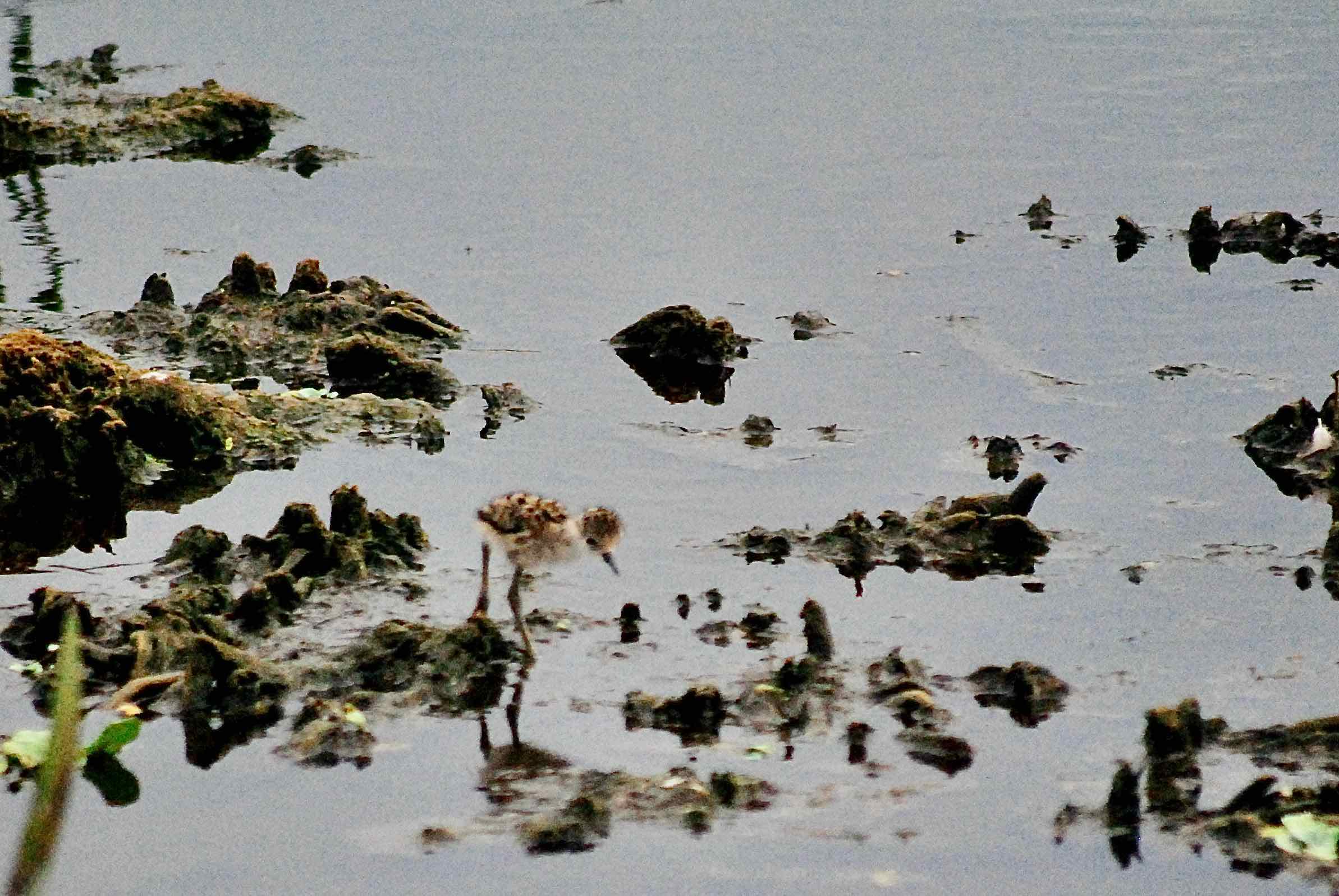
A day old black-necked stilt begins to explore his world at Green Cay Nature Center in Boynton Beach.
BOYNTON BEACH — This is not a story with a happy ending. Or a sad one, for that matter. It's one without an ending, really. One that happens every year, a thousand times and more. It's the story of life itself.
One day in early May, we spotted a pair of black-necked stilts nesting near the boardwalk at Green Cay Nature Center in Boynton Beach. Stilts are common here, this time of year. They come here to breed, and to raise their young.
We've seen nesting here before, pretty much every year in varying numbers. Sometimes a lot, sometimes few. But rarely so close to the boardwalk and so much in the open.
Stilts are waders, shore birds. They nest on the ground, in mounds lined with vegetation barely above the water. It's a risky strategy. If the rainy season comes early, the nest could be flooded. And there's a long list of predators that have eggs on their menu, including raccoons, alligators, snakes, other birds and a whole lot more.
On the other hand, stilt chicks are able to climb out of their nest and feed themselves soon after hatching. And stilt parents are extremely aggressive when it comes to defending their offspring. Whole colonies are known to react when a threat is perceived.
It's impossible to pinpoint when the nest was built and the eggs laid — four of them — but we're out at Green Cay fairly regularly. We would have noticed had it been much before May 9.
My wife, Cynthia, and I would make regular trips to Green Cay, hurrying over to the nest site to follow the progress. On May 25, we saw the first chick, and were told that it had hatched earlier in the day.
More hatched the following day. Eventually we saw three chicks. What happened to the fourth egg is unknown. Was the egg eaten or otherwise destroyed? Did it hatch and the chick become a snack for a predator? We don't know.
For the next few days, we'd come out and watch as the chicks would wander about their world, picking the mud for food, then take refuge under their parents' wings.
We saw nothing that would really threaten the brood. A moorhen or a mottled duck might approach; the parents would react as if it were an red-shouldered hawk.
Not long afterwards, the stilts moved a few hundred feet to west, making a home among thickets of fireflag, bulrush and pickeral weed.
We could see they were still there. The parents could be seen at times flying in and out and occasionally posturing as an intruder wandered into the area. We'd see the chicks now and then.
But soon they were gone. Our last sighting of the parents on June 5. Did they move to another site? Was the brood wiped out by some predator?
Again, we don't know. Nature isn't always kind, but it always goes on. There will be more stilts at Green Cay this spring and more stories like this.
One day in early May, we spotted a pair of black-necked stilts nesting near the boardwalk at Green Cay Nature Center in Boynton Beach. Stilts are common here, this time of year. They come here to breed, and to raise their young.
We've seen nesting here before, pretty much every year in varying numbers. Sometimes a lot, sometimes few. But rarely so close to the boardwalk and so much in the open.
Stilts are waders, shore birds. They nest on the ground, in mounds lined with vegetation barely above the water. It's a risky strategy. If the rainy season comes early, the nest could be flooded. And there's a long list of predators that have eggs on their menu, including raccoons, alligators, snakes, other birds and a whole lot more.
On the other hand, stilt chicks are able to climb out of their nest and feed themselves soon after hatching. And stilt parents are extremely aggressive when it comes to defending their offspring. Whole colonies are known to react when a threat is perceived.
It's impossible to pinpoint when the nest was built and the eggs laid — four of them — but we're out at Green Cay fairly regularly. We would have noticed had it been much before May 9.
My wife, Cynthia, and I would make regular trips to Green Cay, hurrying over to the nest site to follow the progress. On May 25, we saw the first chick, and were told that it had hatched earlier in the day.
More hatched the following day. Eventually we saw three chicks. What happened to the fourth egg is unknown. Was the egg eaten or otherwise destroyed? Did it hatch and the chick become a snack for a predator? We don't know.
For the next few days, we'd come out and watch as the chicks would wander about their world, picking the mud for food, then take refuge under their parents' wings.
We saw nothing that would really threaten the brood. A moorhen or a mottled duck might approach; the parents would react as if it were an red-shouldered hawk.
Not long afterwards, the stilts moved a few hundred feet to west, making a home among thickets of fireflag, bulrush and pickeral weed.
We could see they were still there. The parents could be seen at times flying in and out and occasionally posturing as an intruder wandered into the area. We'd see the chicks now and then.
But soon they were gone. Our last sighting of the parents on June 5. Did they move to another site? Was the brood wiped out by some predator?
Again, we don't know. Nature isn't always kind, but it always goes on. There will be more stilts at Green Cay this spring and more stories like this.
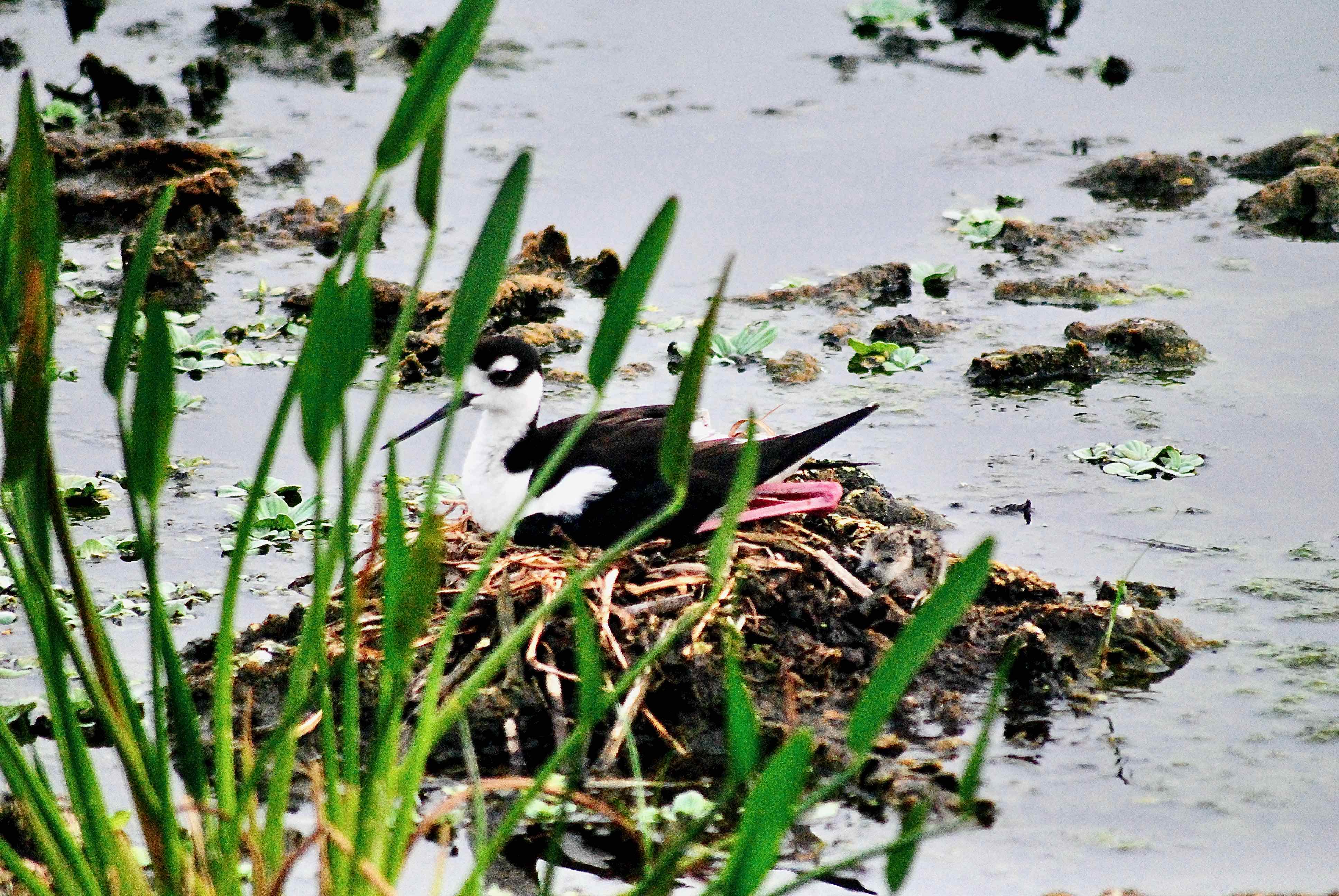
We first spotted the nest on May 9. Hard to say exactly how long it had been since the eggs were laid but judging from incubation times, and when they hatched, it couldn't have been more than a few days earlier.
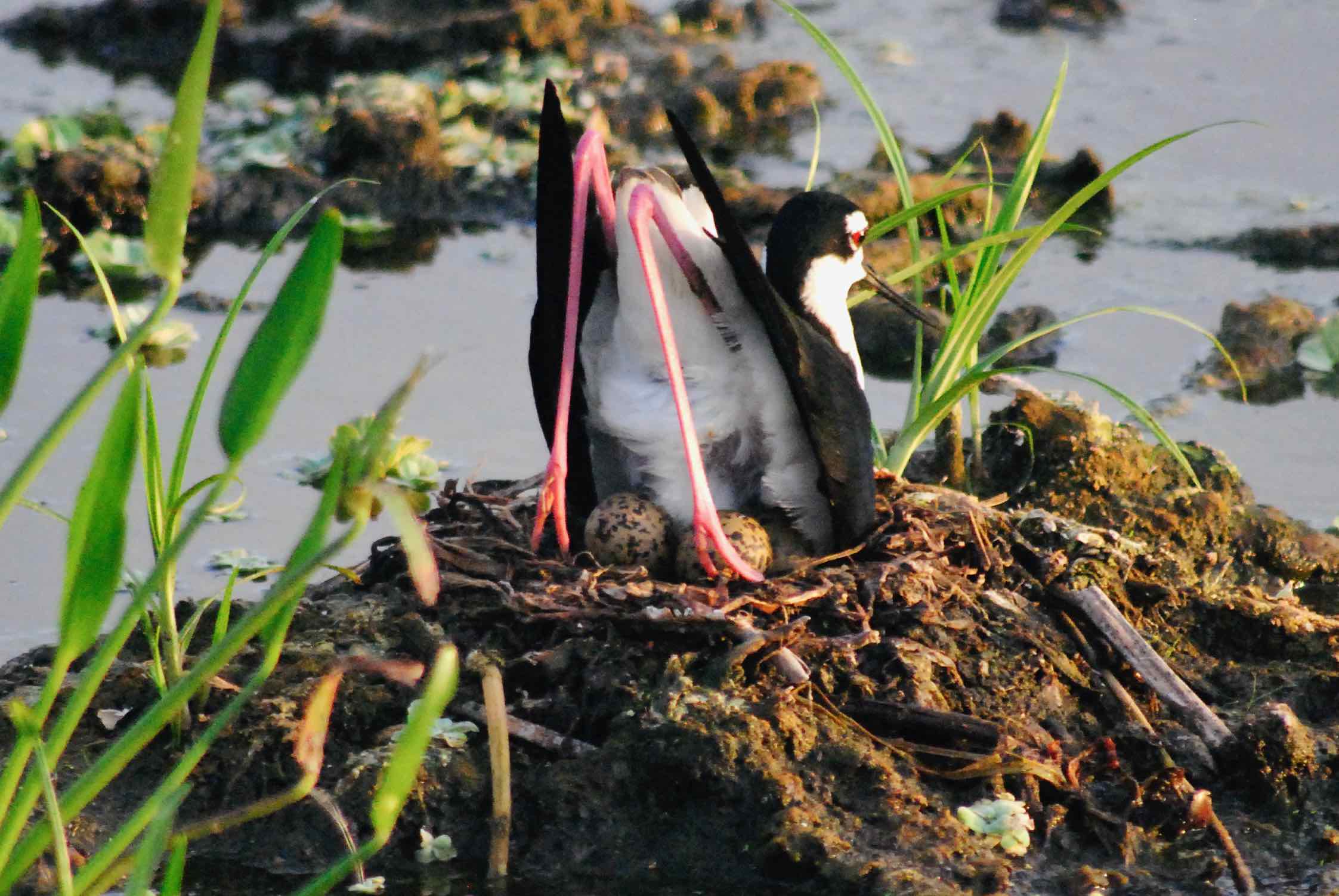
Our first looks at the eggs came a couple of days later. Stilts typically lay between one and five eggs; this nest contained four.
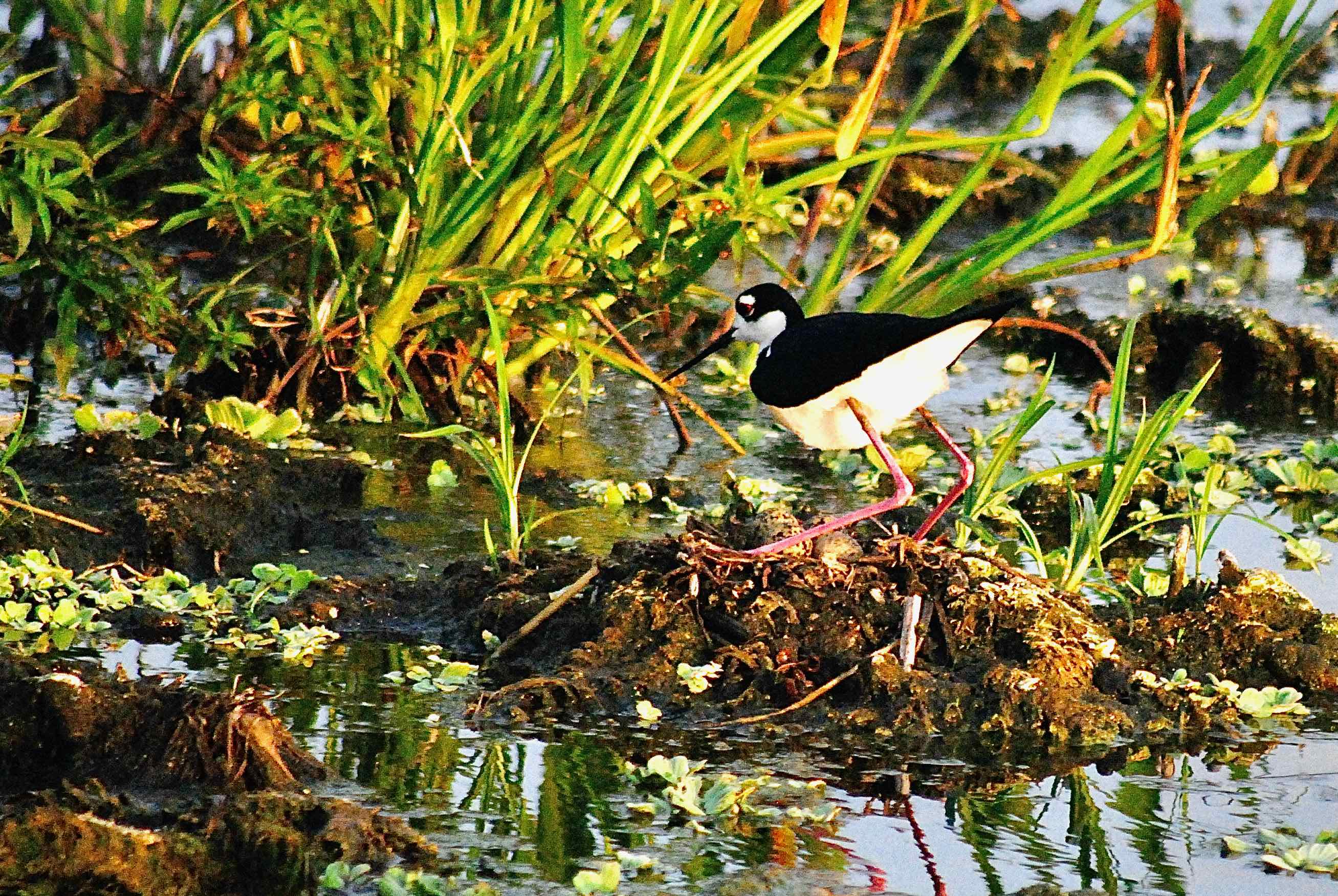
Both parents take turns incubating the eggs. This photo of the father also shows how stilts sort of "fold" their legs as they sit.
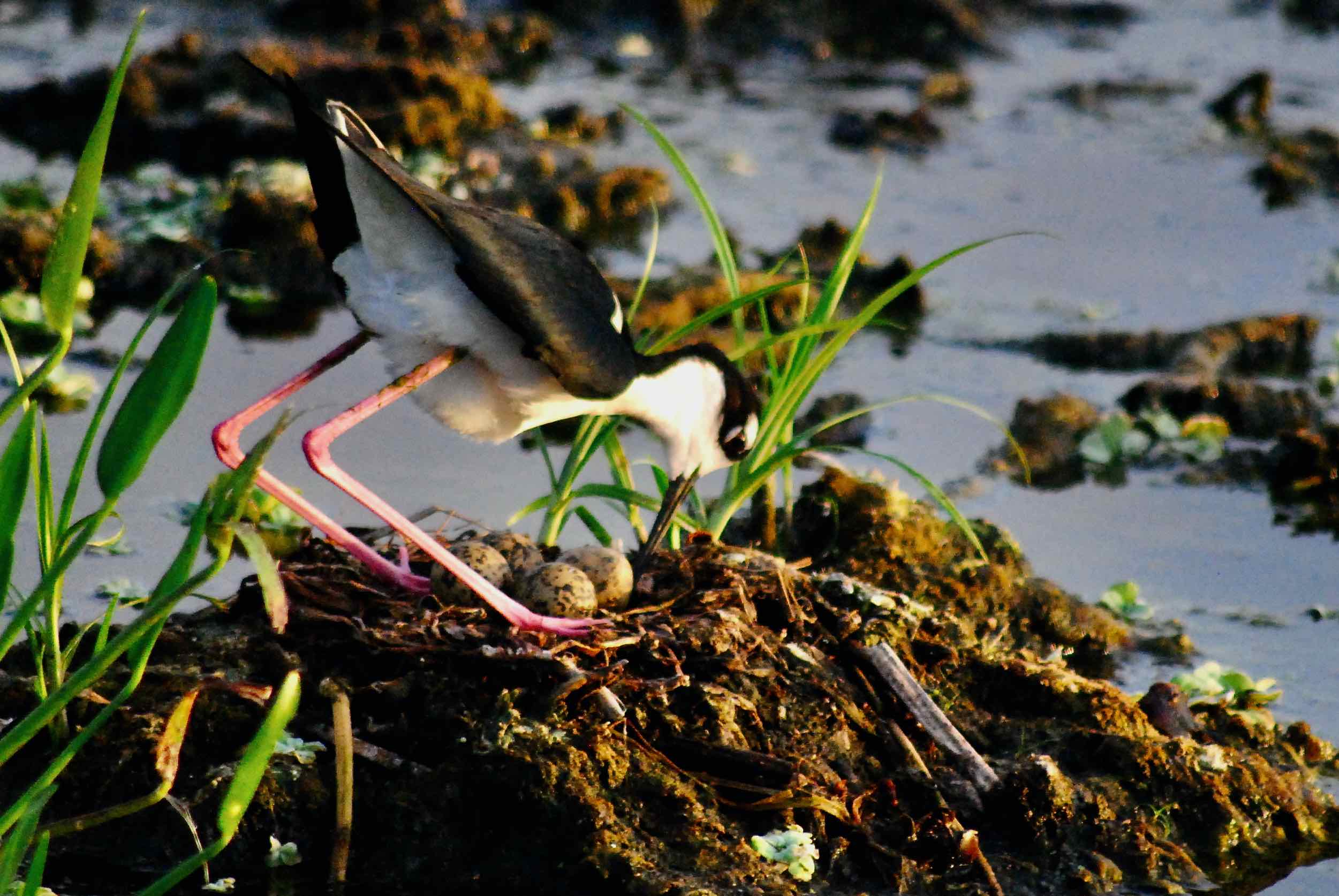
Changing of the guard. A week later and the eggs have yet to hatch.
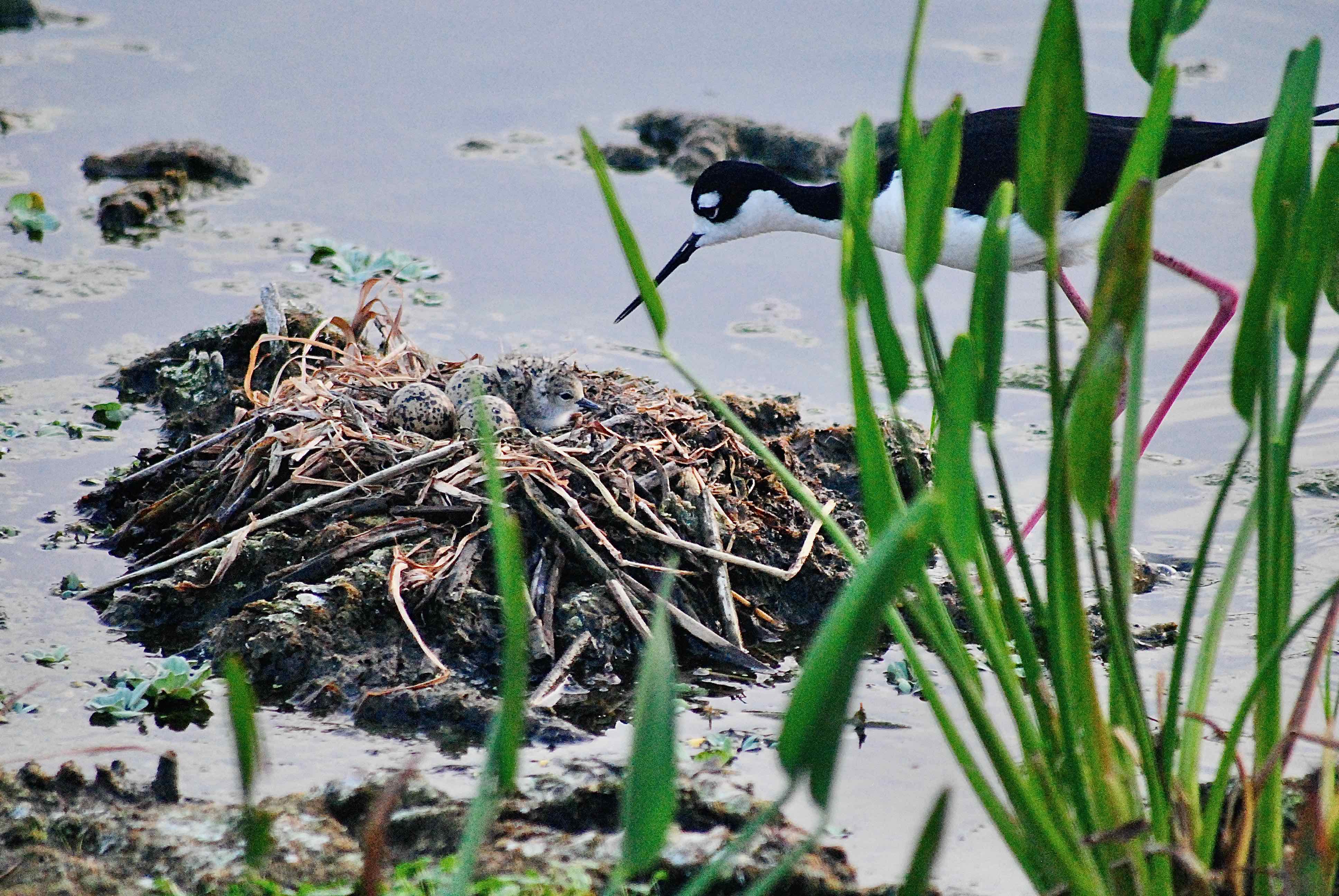
Happy birthday! The first chick has hatched. The date: May 25.
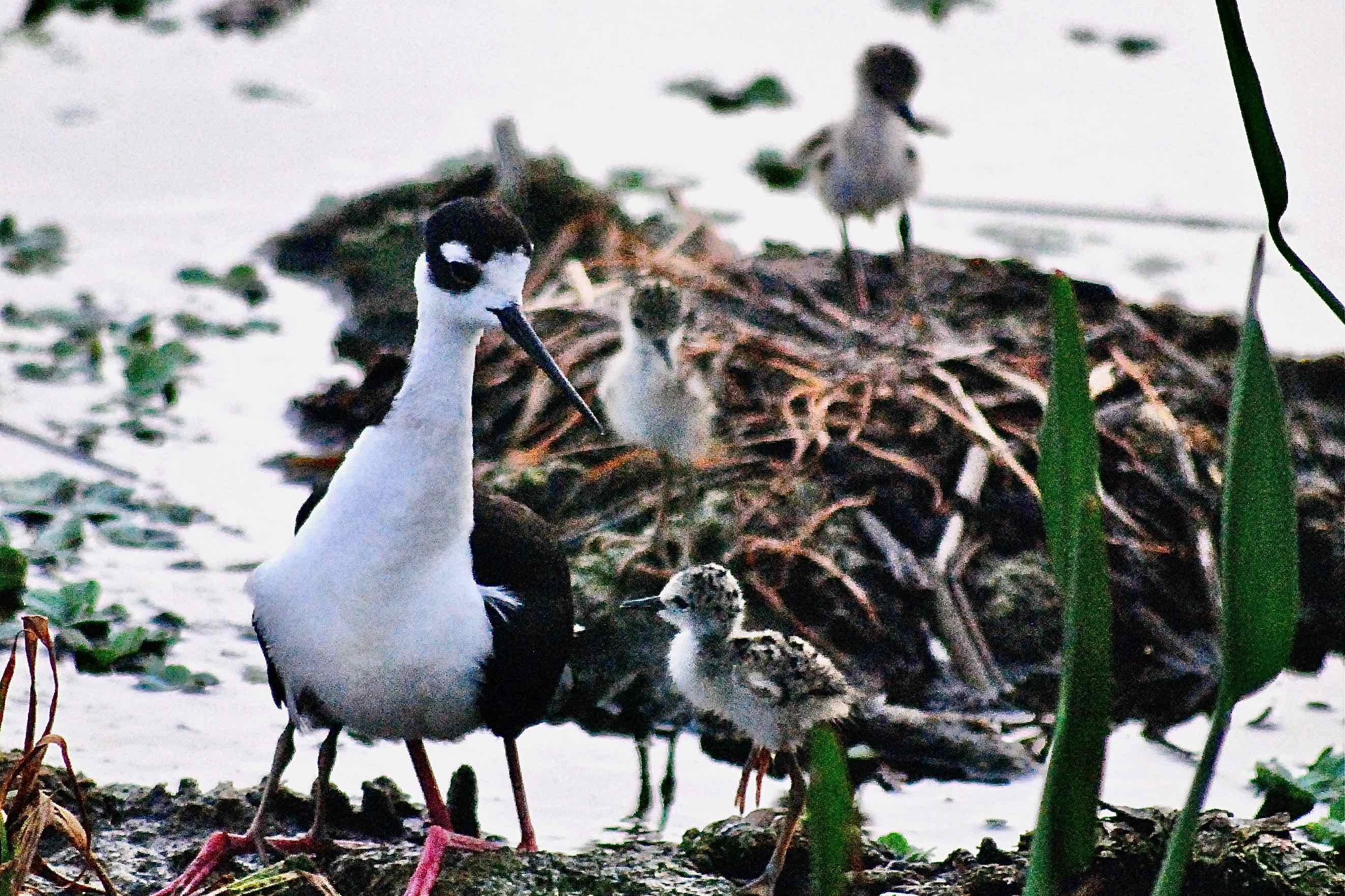
Family portrait: One of the parents with three chicks. Where's the fourth? Good question.
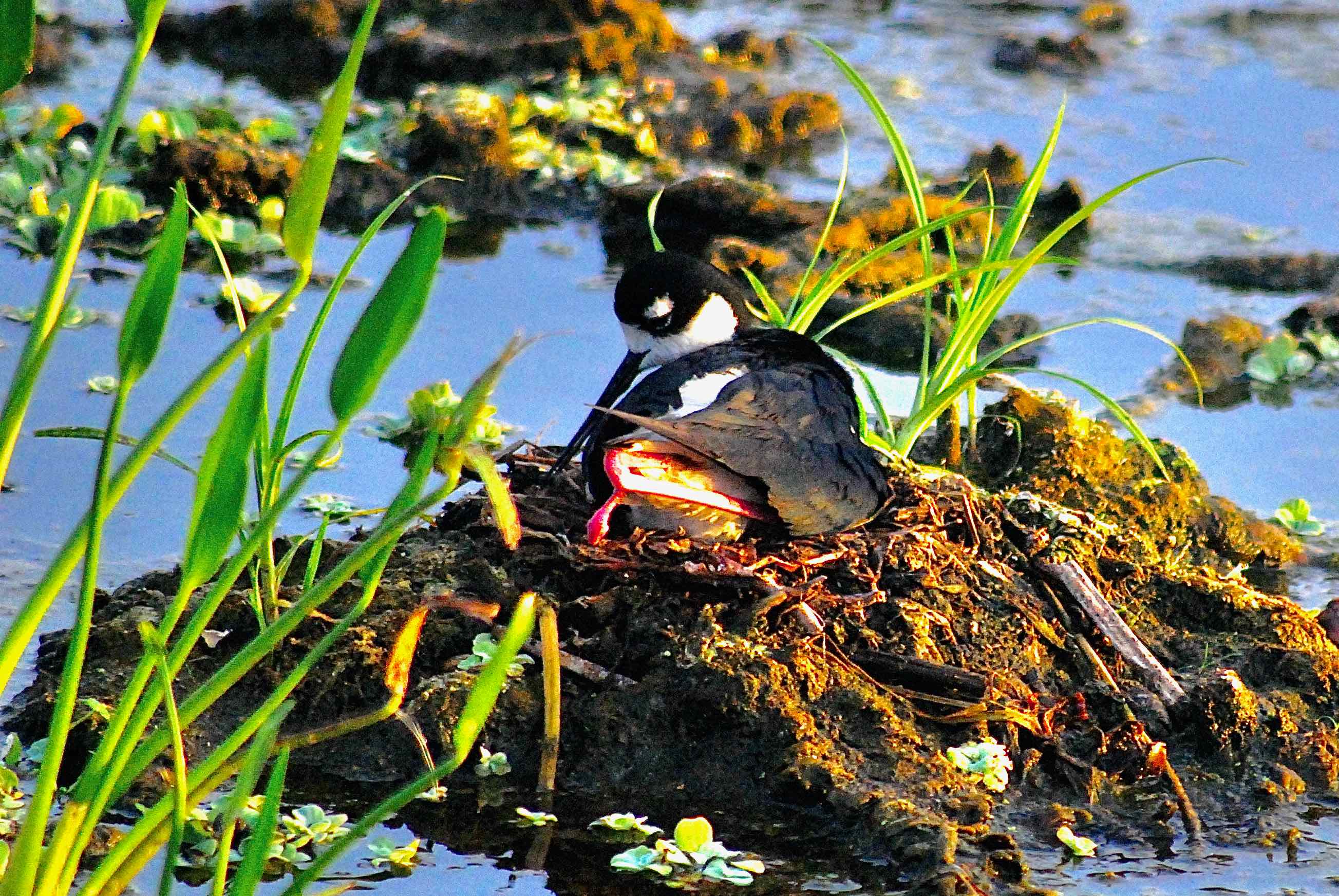
You've surely heard the phrase, taking one under his/her wing. This is where it comes from. In this case, a black-necked stilt mom takes one of her chicks under her wing to keep it warm.
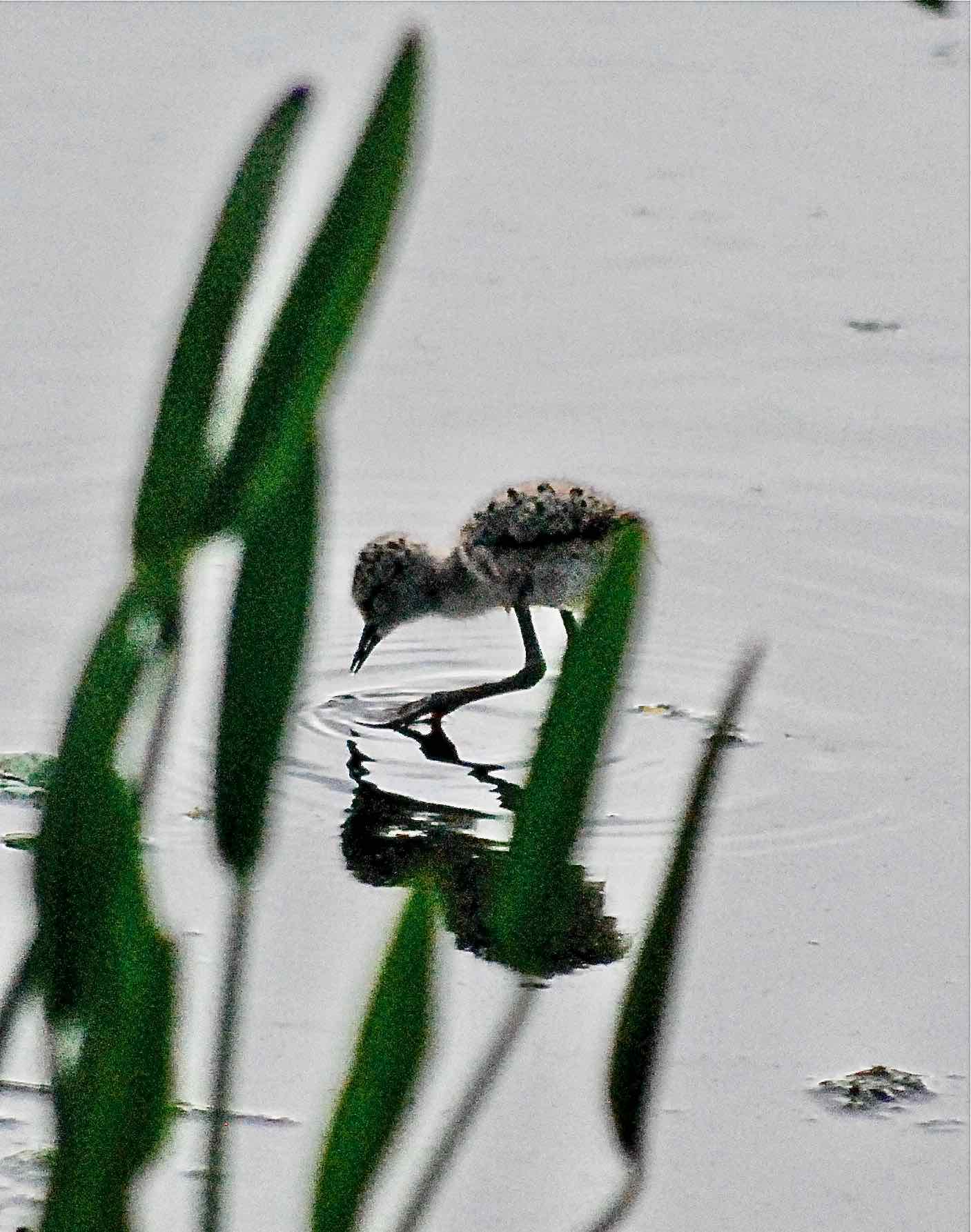
One of the stilt chicks, a few days old. Not long after hatching, stilt chicks can move about their world and even find their own food without the help of Mom and Dad.
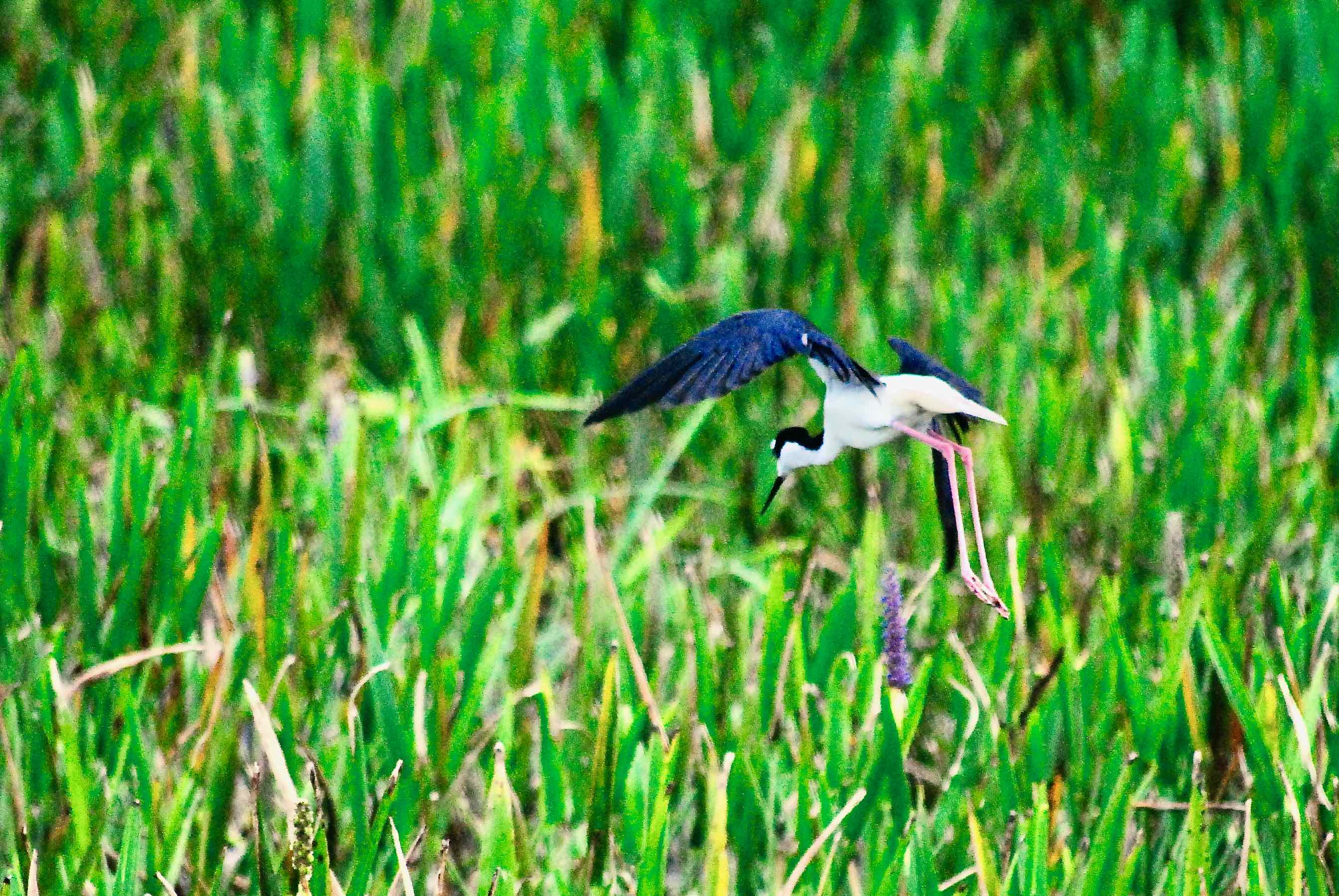
Defensive display: Stilt parents are extremely aggressive in protecting their offspring. Anything that come near one can expect to be "greeted" most unwarmly.
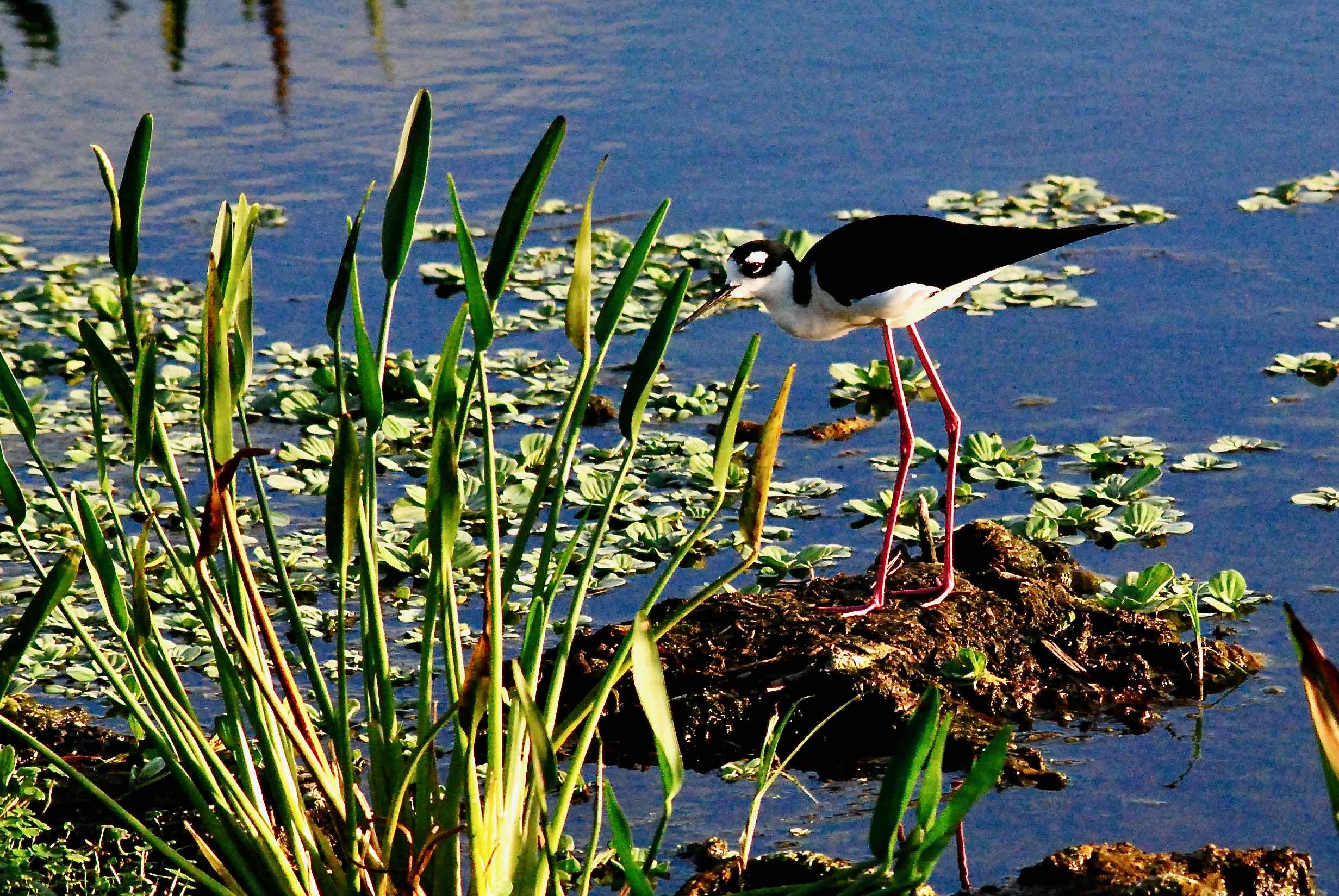
Our last look at the family came on June 5. This photo was taken a day earlier. The family likely migrated to a different part of Green Cay in order to protect the chicks. Assuming they survive, in a month or so the chicks would fledge, hanging around Green Cay into early July and gaining strength before migrating on. We like to believe they made it that far, but Their fate is a mystery to us. Regardless, the story would be repeated come the next spring, come the one after that, come the one after that and so forth.
